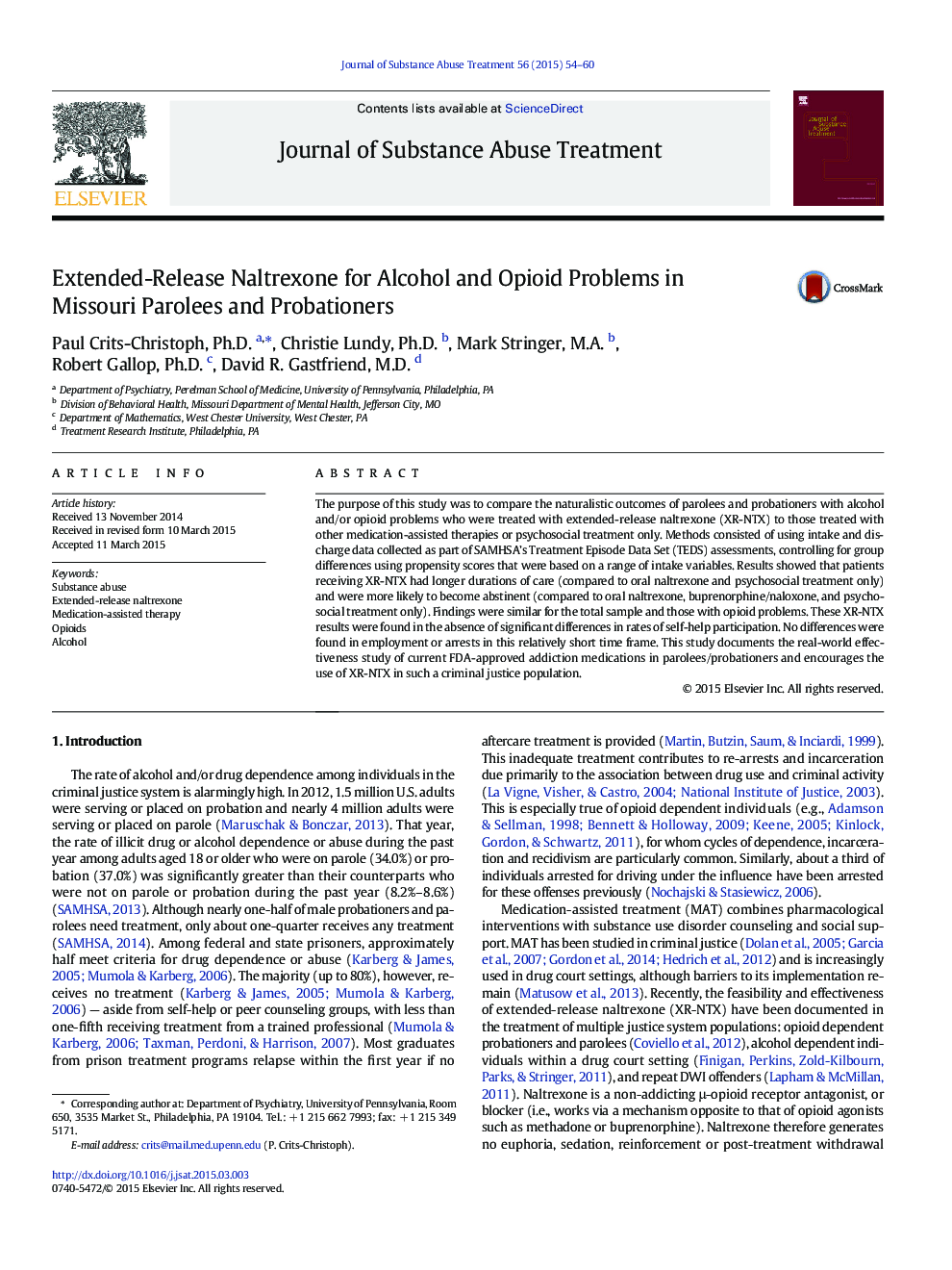| Article ID | Journal | Published Year | Pages | File Type |
|---|---|---|---|---|
| 329677 | Journal of Substance Abuse Treatment | 2015 | 7 Pages |
•We examined naturalistic treatment outcomes of probationers and parolees.•Extended-release naltrexone (XR-NTX) had a higher rate of abstinence.•XR-NTX had a longer average treatment duration than oral naltrexone or counseling.•No differences in rates of self-help participation or re-arrests were apparent.
The purpose of this study was to compare the naturalistic outcomes of parolees and probationers with alcohol and/or opioid problems who were treated with extended-release naltrexone (XR-NTX) to those treated with other medication-assisted therapies or psychosocial treatment only. Methods consisted of using intake and discharge data collected as part of SAMHSA’s Treatment Episode Data Set (TEDS) assessments, controlling for group differences using propensity scores that were based on a range of intake variables. Results showed that patients receiving XR-NTX had longer durations of care (compared to oral naltrexone and psychosocial treatment only) and were more likely to become abstinent (compared to oral naltrexone, buprenorphine/naloxone, and psychosocial treatment only). Findings were similar for the total sample and those with opioid problems. These XR-NTX results were found in the absence of significant differences in rates of self-help participation. No differences were found in employment or arrests in this relatively short time frame. This study documents the real-world effectiveness study of current FDA-approved addiction medications in parolees/probationers and encourages the use of XR-NTX in such a criminal justice population.
